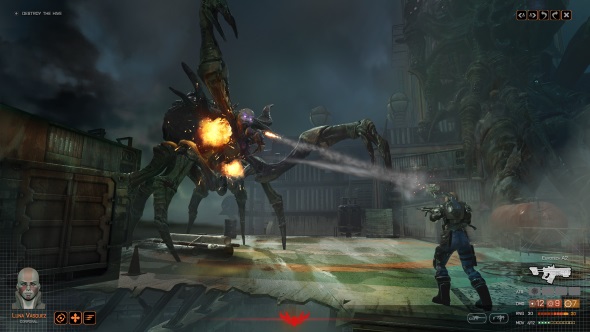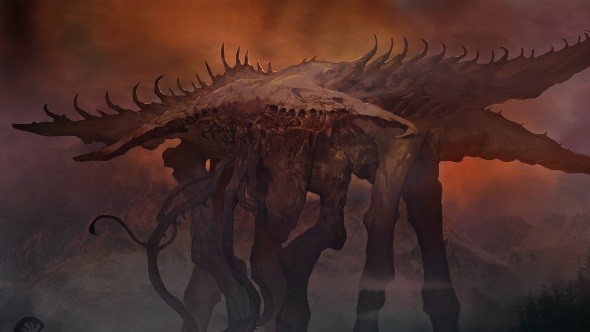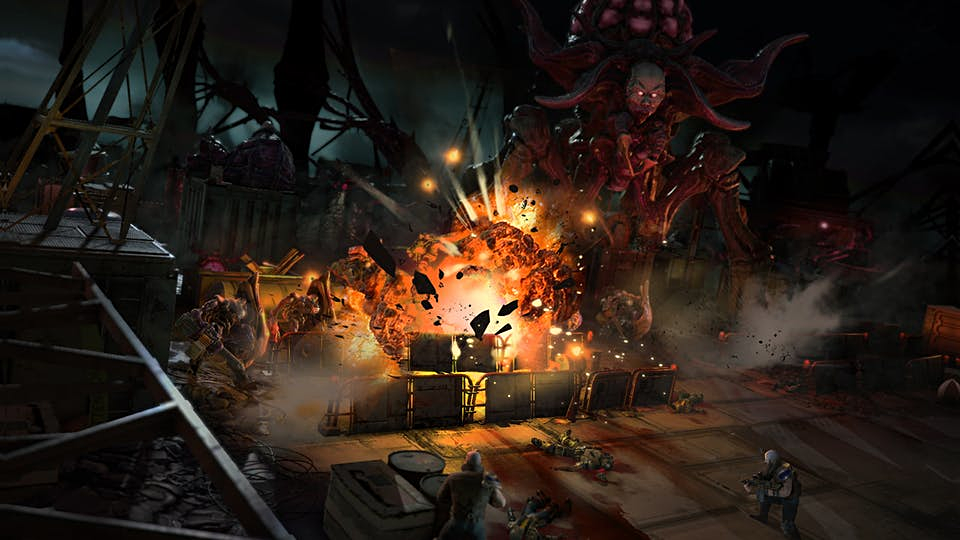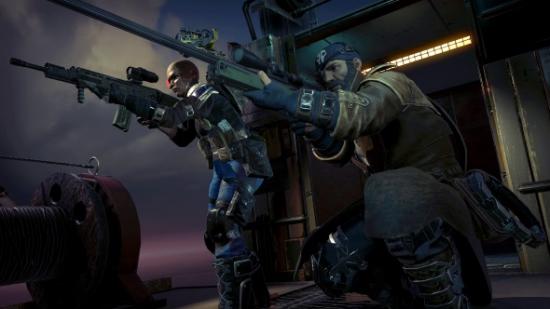Phoenix Point, the current brainchild of X-COM creator Julian Gollop, is going to be a real highlight of 2018. While I’ve only played (and failed) a single mission at the recent EGX Rezzed convention, I can already already see its promise, largely because it’s simply more of the alien defense tactics and strategy that I’ve come to love during Firaxis’s tenure as XCOM custodian. It’s brilliant and you should be paying attention.
In action, Phoenix Point’s tactical battles play out similarly – almost identically, in fact – to the modern XCOM games. Blue and yellow HUD elements guide your way across a grid-based battlefield, the camera swings down into action as your troops unload magazines into hideous creatures, and the words ALIEN ACTIVITY flash as the enemy make their moves. But, underneath the familiar polish of Firaxis’s incarnation, the blood of the original X-COM is most certainly in Phoenix Point.
Hungry for more? Try our favourite PC strategy games.
“We have more flexibility in the tactical systems,” Julian Gollop, founder of Snapshot Games, says. “We also have more inventory management, multiclassing characters, and a lot more flexibility in the loadouts of your characters. It has elements of the old X-COM and the new XCOM, and I think I would say it’s definitely an evolution. It’s a mutation.”
The first indication of this mutation is the chunky, Aliens-like troop carrier positioned at the very start of the demonstration mission. I’m unable to use it here, but Gollop promises I can get behind the wheel in the final game. “Vehicles give you alternative ways for deploying troops,” he explains. “You can load up your squad, the vehicle will move very quickly across the battlefield, and safely deploy troops into cover. Some vehicles are armed, and some of them can be used to ram terrain and clear a way through areas.”
That last point links into another new element Phoenix Point introduces: completely destructible cover. Everything you see can be reduced to rubble, be that by a vehicle smashing into it, or one of the game’s colossal creatures tearing it down. “It poses a challenge to players in the fact that you cannot entirely rely on cover because it might not be there,” Gollop laughs. “At the same time, you have to use the cover to hide from some of the ranged combat enemies that you’ll face. So it’s a question of balance, deciding where you can reliably stay for a short period of time.”
This makes combat much less comfortable than that seen in XCOM. The sentiment applies to much more than reliable cover, though. Your weapons fire projectiles with more maths underpinning them. For example, a 67% chance to hit doesn’t apply to the whole shot, but to each of the individual bullets fired in a burst. Small adjustments like these make the Phoenix Point experience feel much more on a knife point than XCOM’s; there are so many variables that could see you toppling into failure, but so much scope for inventive tactics and enhanced soldier development.

You’ll want to spend plenty of time configuring your loadouts and considering every action, too, since your enemies are as ferocious as they are nightmarish. Created by the Pandoravirus – a concept that’s only half fiction – they are bred for battle. “The oceans of planet Earth are full of viruses and we know very little about them,” Gollop explains. “Some of them are enormous viruses with huge genomes, so we speculate that these genomes could be partially alien.”
“They’re dormant on planet Earth and get revealed by melting permafrost,” he adds. “They’ve been here millions of years, and there have been past outbreaks of this Pandoravirus. Part of the Lovecraftian aspect of the game is the idea of what is alien is hideously alien, but this idea that it can merge with humanity and create something horrific.”
It’s that last point that’s most disturbing: Phoenix Point’s enemies are a grotesque fusion of human and alien. Where Firaxis’s XCOM goes the route of classic sci-fi with its Gray-like Sectoids and X-Files-esque Thin Men, Snapshot has opted for something much more H.R. Giger. “The mutations combine sea creatures and human creatures,” Gollop explains. “Later on in the game there will be different kinds of mutations which will involve elements of different animals you might find in various parts of the planet. There are lots of possibilities as to the types of aliens and mutations you will actually discover.”
Such variations include your favourite sea pals with a humanoid head and a rusty heavy machinegun fused into its flesh. “They’ve specifically mutated themselves into highly specialised gunners,” Gollop says. “So they are using Earth-based technology, they are intelligent and sentient beings. At this stage of the game, anyway. They are capable of using technology but they are also capable of building these vast organic structures for which purpose you don’t know at the start of the game.”

Gollop does hint, however, that their purpose could be for the production of Behemoths. “These are like giant harvesters, which gather massive amounts of organic matter in order to continue construction,” he says. “They’re very dangerous, because if they reach a Haven they will literally just stamp on it and kill it.”
The process of bringing down a behemoth sounds exciting. “You need to deploy a squad on top and literally drill through their carapace. They’re highly resistant to most explosive weapons. You’ll basically be fighting tactical battles on the tops of these creatures in order to try and take them down.”
It is elements like these that will set Phoenix Point’s combat apart from XCOM’s. But while Behemoth battles will only occur once in a while, the aliens’ terrifying ability to mutate will be present in every battle. This system proves to be Phoenix Point’s real draw.
“What [the aliens] do is a trial and error system,” Gollop explains. “So if they find a particular mutation is not performing well in battle because you’ve learnt how to deal with it, they’ll mutate it and try to come up with something different. And if a mutation starts performing well they will deploy more of them. It does mean that if you do try different strategies and tactics from one game to another you will inevitably face different kinds of opponents.”
This is certainly an intriguing prospect, but one that also introduces some difficult decisions. Should you invest in a powerful technology if there’s a chance your enemy will turn it against you? The idea is a smart twist on XCOM, which lets you power yourself up with alien technology, but without any fear of repercussion.

If you’d like to strike back at the Pandoravirus with their own tactics, you will have the opportunity to experiment with mutation yourself, provided you forge an alliance with Phoenix Point’s weirdest faction.
“[The Disciples of Anu] are an extreme religious cult who believe that an alien god is coming to rescue humanity,” Gollop explains. “They have religious rituals that involve mutation. They can control the mutations, so they’re constantly trying to mutate humans into better soldiers or better human beings as their main objective.”
“You will be able to gain access to it, and you can use it on your own soldiers,” he adds. “You can also recruit some of their soldiers and they will have various mutations, including the Mutock Handlers. These guys have telepathic control of special mutant creatures.”
In just a short mission and conversation, it has become clear how many new and different ideas Phoenix Point has, despite fundamentally looking and feeling like XCOM. While XCOM 2 felt like the perfect sequel at the time, Phoenix Point looks to be the real successor to Firaxis’s rejuvenation of Gollop’s original formula. Tactical planetary defence is returning home in serious style.
